
Simple Water Play
Over the years we found playing with water so easy and fun. So simple, in fact, that I hadn’t thought to post about it before. Last week I was thinking of ways we could stay cool with the upcoming hot spell and realized I should start with simple water play. Water is fascinating and works with so many ages, even now a couple months shy of four, water play is keeping Zoey entertained for a good portion of time while Ada works on her schoolwork. Changing up for the toys for characters can also keep Ada, almost six, entertained while she crafts pretend stories that the toys are taking part in.
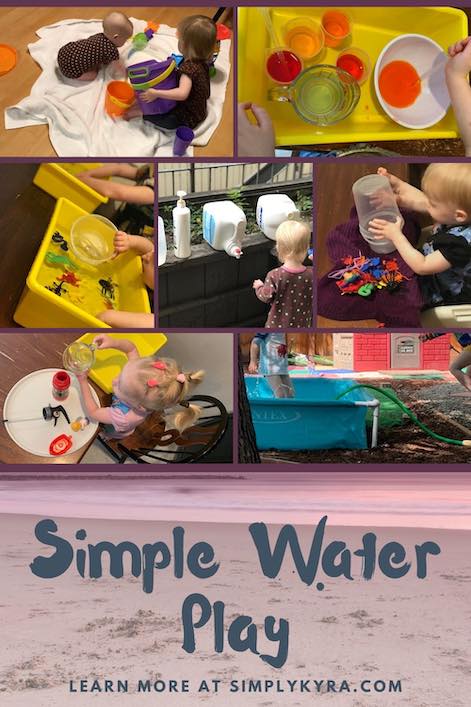
The simplest and most obvious way to play in the water in the summertime is getting a pool. Up until last year we lived in an apartment with a deck and I didn’t want to have to dump large amounts of water off of it, or have to fill it somehow from our kitchen sink, so we stayed away from wading pools and kept ourselves limited to plastic bins, occasionally, and jugs of water for our play. Last year, after gaining a backyard and garden hose, we bought one of those cheap plastic kiddie wading pools but after storing it outside over the winter and using it once it sprang a bunch of leaks. I debated just buying another one but after wondering if it was worth doing a Walmart run for just a pool and shopping around online I came across this Intex framed pool that we’ve been loving since (no affiliate and we’ve only used it a couple times so far) that we had delivered from Target. The reason I shared this was because last year the kids took hours to actually swim in the pool and then it was almost time to go in and dump it out. Since then we’ve gained a Melissa & Doug sprinkler so I had the bright idea to slowly fill the pool by using the sprinkler, turned down so most of the water stays in the pool, and then the kids have time to get wet. Did they get their hair wet last time? Nope, but they stayed in the pool longer and played outside all afternoon. While filling the pool the kids often leave the the sprinkler resting at the bottom of the pool so, once the water gets high enough, it floats up; though they’ve also learned they can hold the sprinkler upside down so the water rains down. Once the water gets high enough in the pool I turn off the water and pull the sprinkler out.
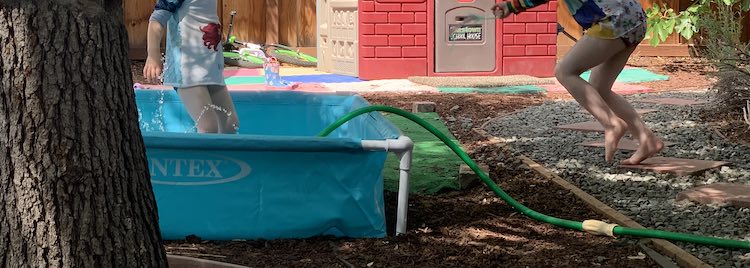
Simple Water Inside
I went looking through my archives for water play photos and found this adorable scene. Zoey’s first sensory bin was water and toys though she preferred just the water. We had just gone to Costco where I had found a new sand toy set, I saw a similar one recently at our Costco this year if you’re looking, so when I got home I randomly grabbed a large container, opened the sand toys, laid out some towels, added water, and both kids had an absolute blasted in our kitchen. I know we did this several times, with different sized bins, over the next couple weeks before I decided the sand toys should go to the playground with us thus ending this form of water play.
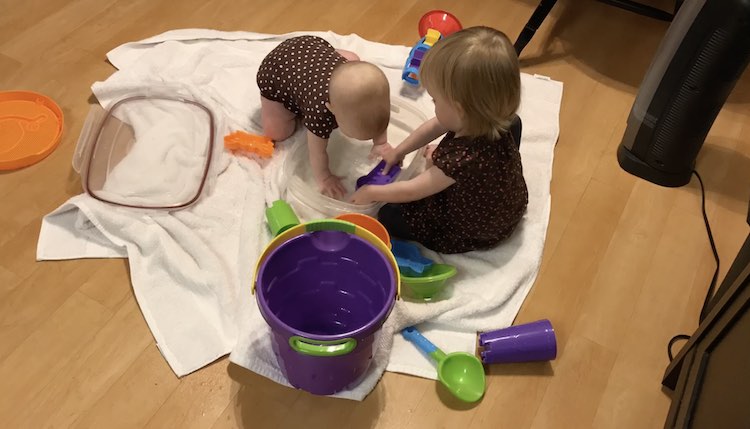
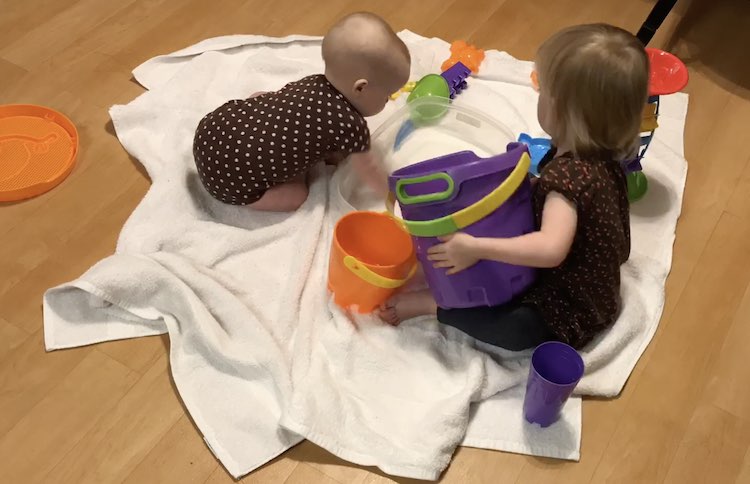
Over the years we often pulled out water bins inside the house so the kids could play and learn. I tried to change it up by switching out the bin, bringing the play to the table, changing out the toys, and adding containers to pour with. Since this is inside it works great regardless of what the weather outside is doing or the season you’re in. And since it’s just water if they make a mess all you need is a towel and a change of clothing.
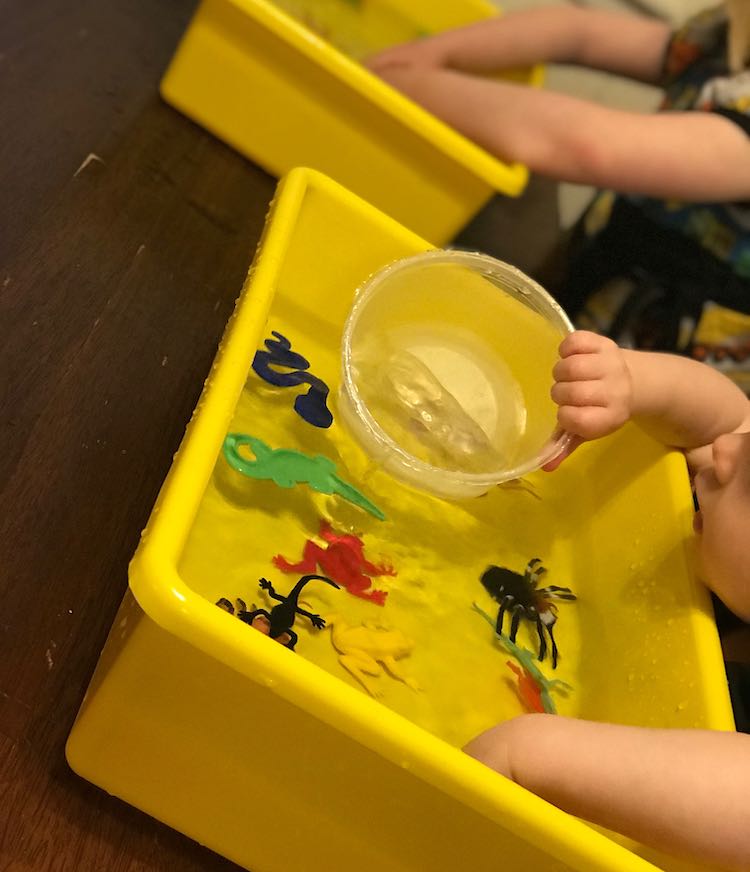
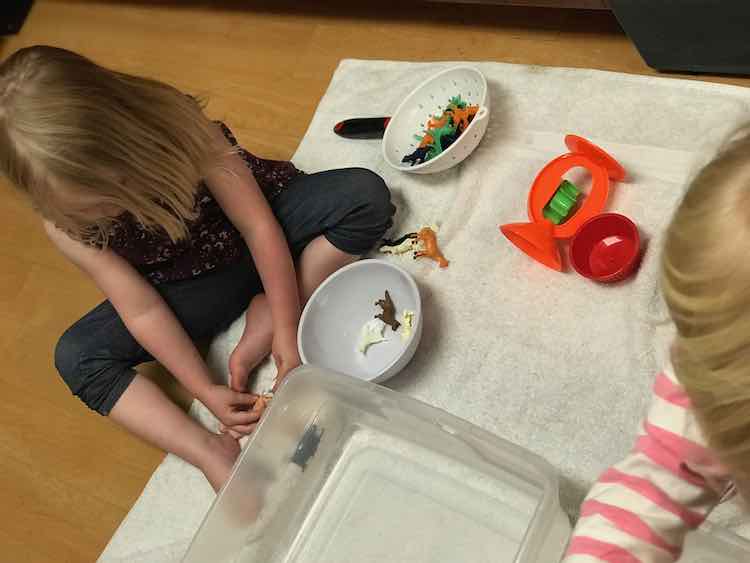
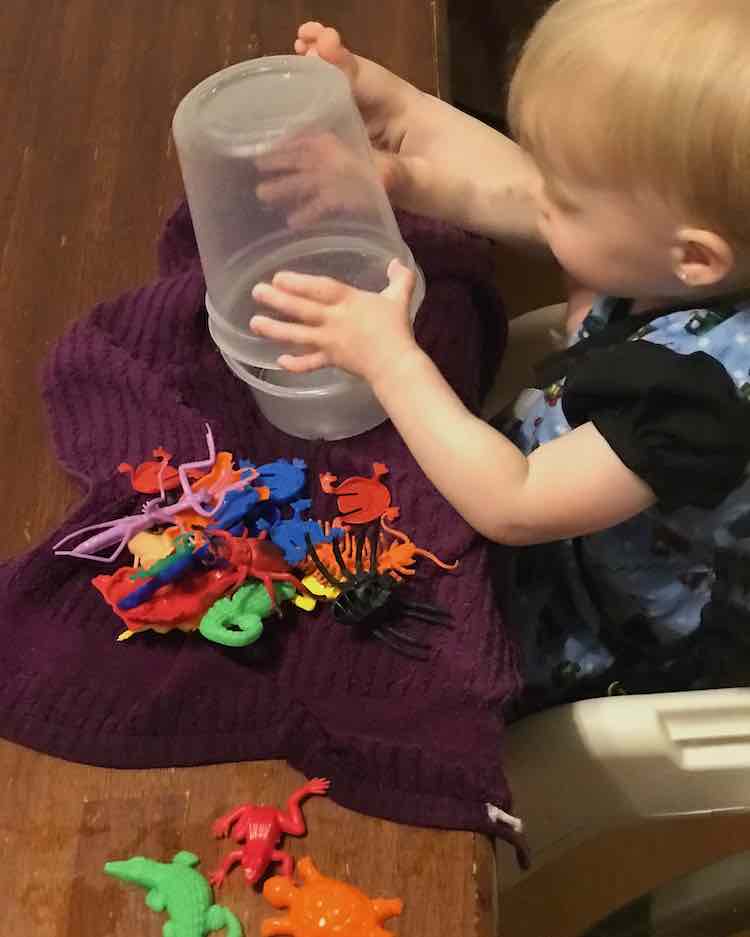
If you’re looking at toys you could add to your water play you could always check out the kids toy area. I’ve often told Ada and Zoey to go grab two water-proof toys from their room and come back while setting up a sensory bin. My hope was that if they chose their toy themselves they may play with it for longer. Back in 2018 Zoey wanted to be a firetruck for Halloween and to round out her costume we bought an accessory pack that included a fire extinguisher with a spray capability. I was careful not to tell the kids what it did, they didn’t realize what they had, and after Halloween I put all the accessories in their dress-up drawer and completely forgot about what the one toy could do. A couple months ago, while Ada was in school, Zoey pulled it out and showed it to me. I decided then and there to show her what it could do and another toy was added to our sensory bin shelves. The first day she made a mess with the water, easily cleaned up with a towel, so after that we pulled out a tray to put next to her sensory bin to pour the water on. For a solid two weeks she played with it, almost daily, while Ada was in school for a couple hours each time. Now it comes out less frequently but it made a reappearance last week and she’s still loving the independence of filling the fire extinguisher up herself and she, sometimes, still uses it to spray too.
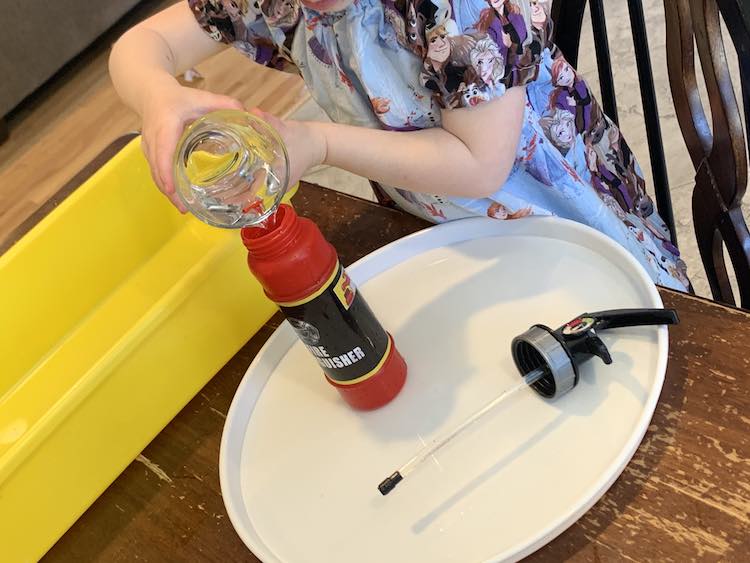
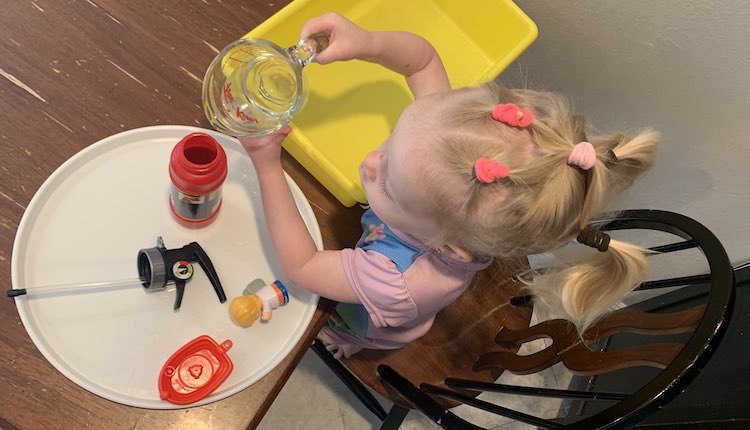
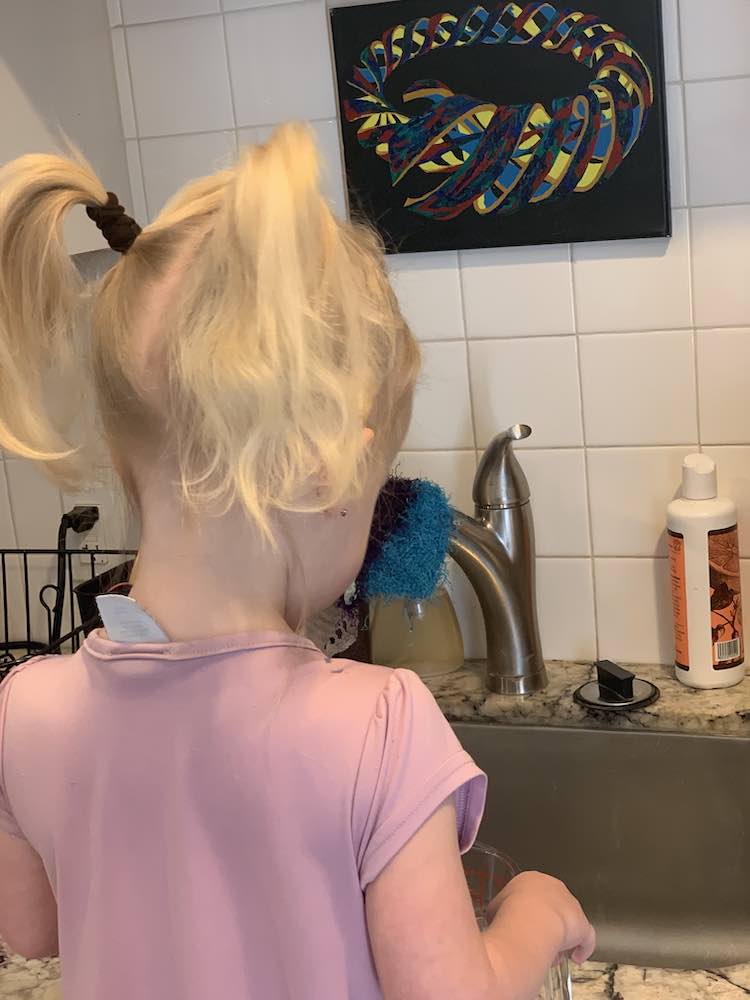
Simple Water Outside
You could also take your water play outside. When the kids were younger I didn’t want to keep refilling a big bin of water especially since we didn’t have a garden hose outside so I ended up using emptied bottles, and filling them all up at one time, so the kids could learn how to work it themselves and have a measure of independence while I had, the idea of, more time without frequently having to refill dumped out buckets. When I first introduced an empty laundry jug for water, so the water would take longer to get out and thus last longer, I still had to keep getting up to fill buckets, from the jug, for Ada since she couldn’t work it herself yet. Over time, however, she learned how to use it herself which felt so liberating, at the time, for me. Of course, Ada eventually learned how to unscrew the main lid so she could dump it out quicker which defeated the pump’s purpose but it was great while it lasted.
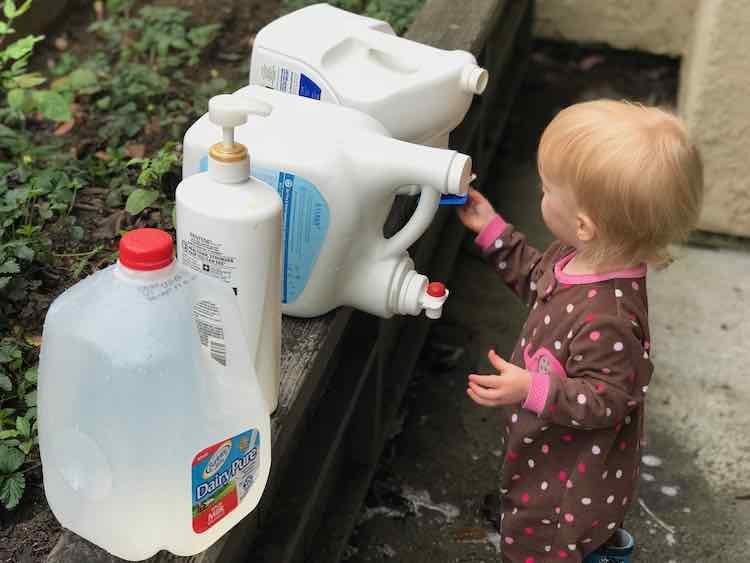
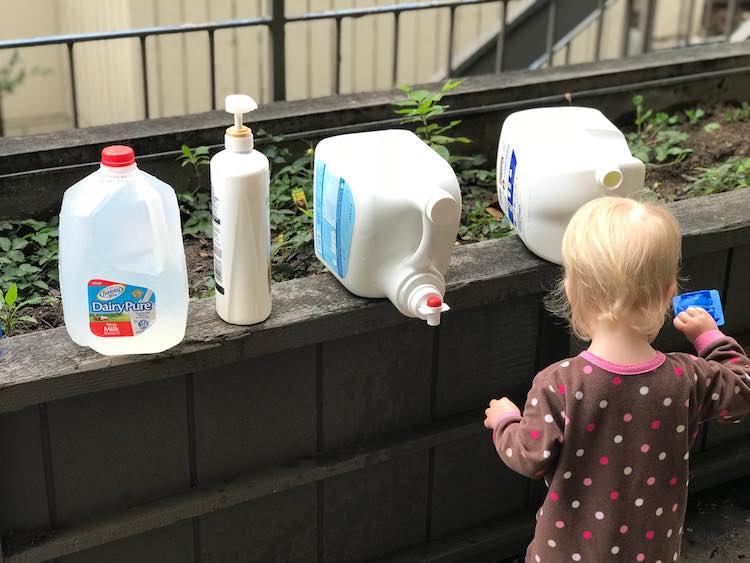
What other tools and toys can you use to help your kids play with water outside? What can they themselves find? Last summer I bought the cheap vegetable scrubbers from Ikea and the kids had a blast scrubbing down their playhouse and toys. I’ve even seen them using it to scrub down rocks and the sidewalk. A frequent activity last year was chalking up their plastic playhouse and then immediately afterwards scrubbing it down so they could do it again. It kept them occupied for hours at a time. Another thing we did last summer was buy a bunch of water shooters from the local Dollar Tree and create targets for Zoey’s birthday party. The targets themselves weren’t used too much after the party but the water shooters have been used frequently by the kids as another method of moving water from one place to another and, lately, for Wonder Woman training targeting the tree, wall, and self-created chalk targets on the walkway.
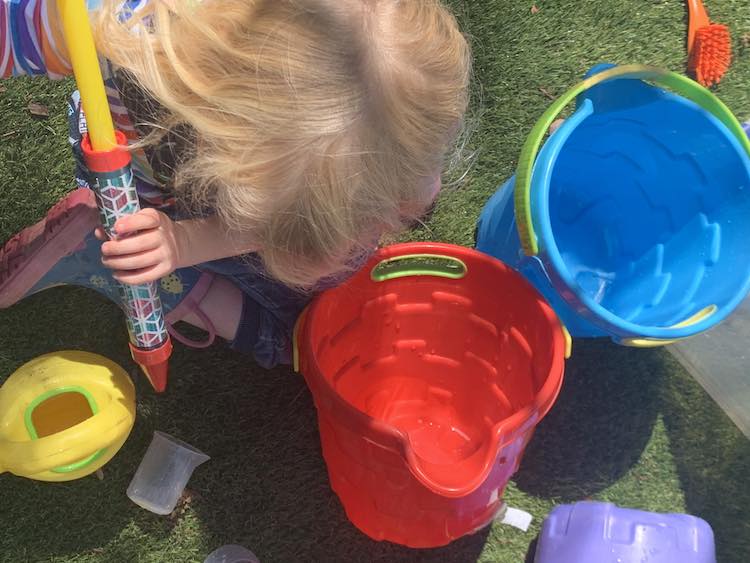
Another activity we did, years ago, if you have a large pail or bin was create a simple sink or float experiment to keep the kids occupied for longer. Just the other day Ada brought me a cool hole-y rock she found and I asked her if it might sink or float resulting in her going to figure it out.
Soapy Water
To change it up I often added soapy bubbles to the water. This could be either leaving the newly emptied laundry detergent bottle un-rinsed, so detergent remained, before filling it with water or by adding a bit of dish soap to the jug when refilling it up. It was always fun to surprise the kids with soapy water in an opaque bottle when they were expecting plain water; though after a while they’d ask if it was soapy or request soapy water so doing it often took away from the fun reveal.
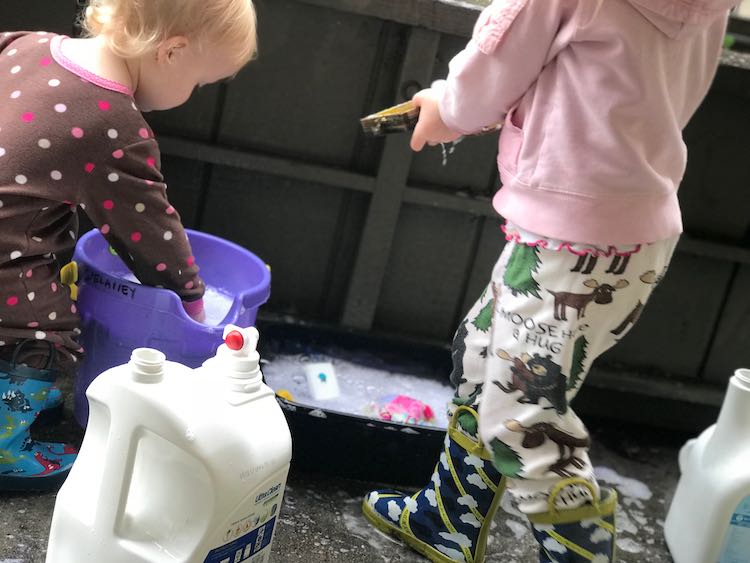
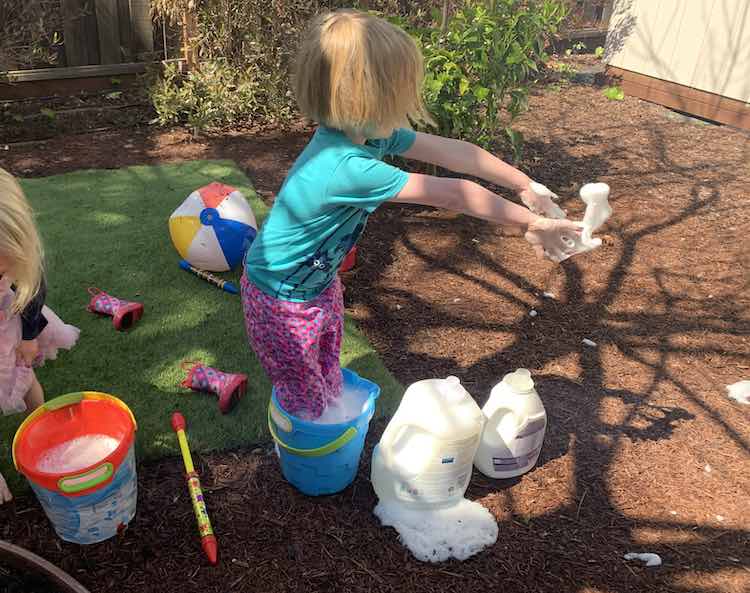
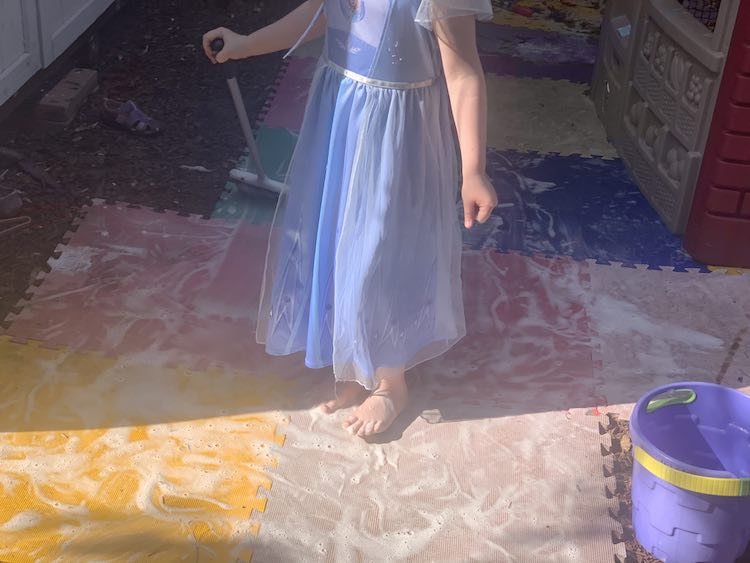
I’ve previously posted about using soapy water outside when I had the kids clean their outside toys and when we created simple dinosaur swimming pools in our garden. Or you can bring it inside. This can be simply a squirt of dish soap with a bit of water added, like when I had the kids clean their toys’ dusty musties, or you can amp up the bubbles by using a stand mixer or blender to mix them up. Use the soapy water to your advantage. I have silicon cupcake liners that I absolutely love… except they never seem to get clean and so I keep washing them over the next couple days. A couple weeks ago I was putting away my clean dishes and realizing just how many of the liners didn’t come clean from the first wash. Ada was busy doing school and I realized I could keep Zoey occupied and having fun by getting her to wash the cupcake liners for me. When she was done I still put them next to the sink so they could be formally washed that night after supper but I didn’t have to do any added scrubbing on them to get them clean. It was a big help to me and Zoey had an absolute blast playing in her sensory bin that morning.
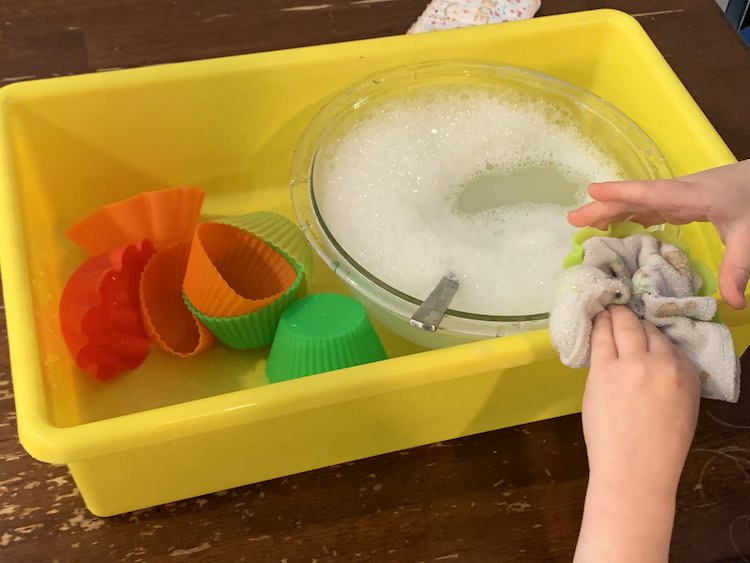
Dyed Water
Another way you can change up your water play is by dying the water. You don’t want to add too much food dye as you don’t want to dye your kids hands. I started out exploring food dye by using the assorted boxes of McCormick water-based food dye you can find at the grocery store but I always found I was using the bottles at different rates and had too much of a single color leftover. They come in sets of four colors so I frequently used the primary colors and was left with green at the end. When the kids favorite colors turned to red and orange I found I was going through so much more red and yellow while not using the blue and green very often. I ended up looking online and found single 16 fluid ounce bottles of McCormick culinary food dye, same essential stuff, and bought all three primary colors (red, yellow, and blue) through Amazon. That, bought in September of 2017, and then the addition of a small bottle of black dye meant I haven’t had to worry about not being able to make a color or buying more dye ever since.
Whenever I use dyed water in our sensory bin I find a small plastic container I don’t worry about being permanently dyed (though it hasn’t happened yet) and drop some food dye directly in before filling the cup up with water. I saved all those measuring cups you get with your laundry detergent bottles over the years and those are perfect for this. About four years ago I bought a pack of a hundred plastic pipettes so I’ve started pulling those out more frequently, now that both kids understand how to use them, and they work perfectly. Since we’re not using them with food, as I’m not sure if they’re food-safe, I keep reusing them until they get too dirty (filled up with baking soda and vinegar or stuck into dirt outside for example) and they’re not worth cleaning out.
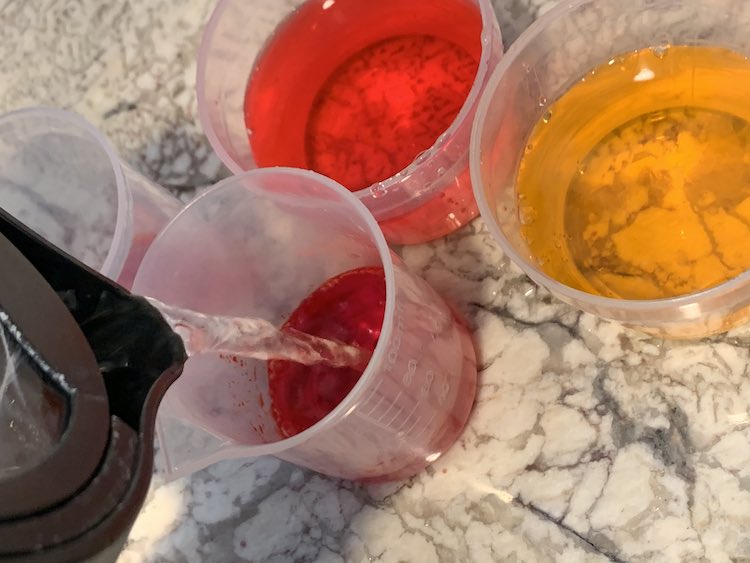
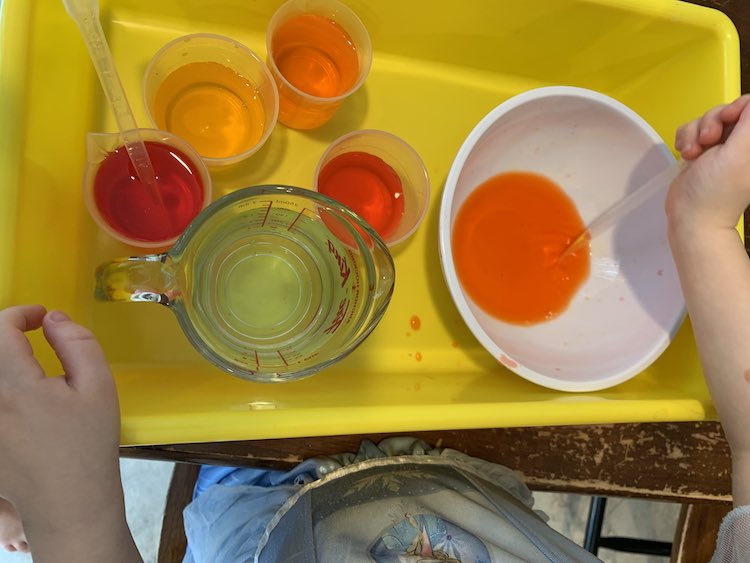
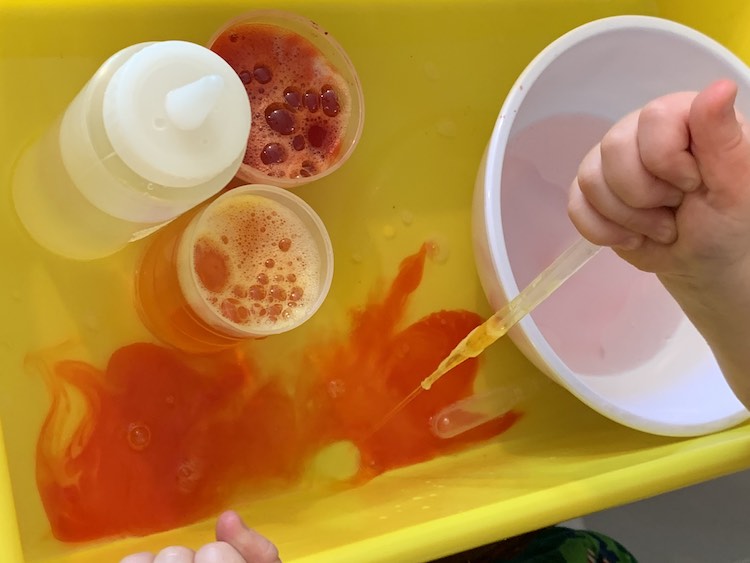
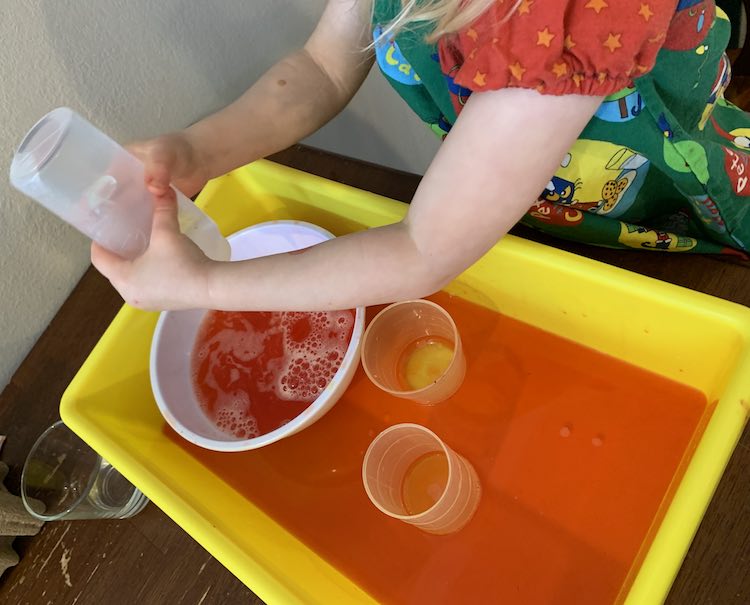
I love how simple and fun water play can be. I also love how it can seem so novel by making simple changes like switching out the toys, changing the tools, updating the location, adding bubbles, or dying the water. Let me know if you try any of these water play ideas or if you have a different favorite you’ve found in the comments below. You can also check out my Facebook page, Instagram account, or join my email list if you want future updates. I hope this post finds you well and you’re day is going well.

